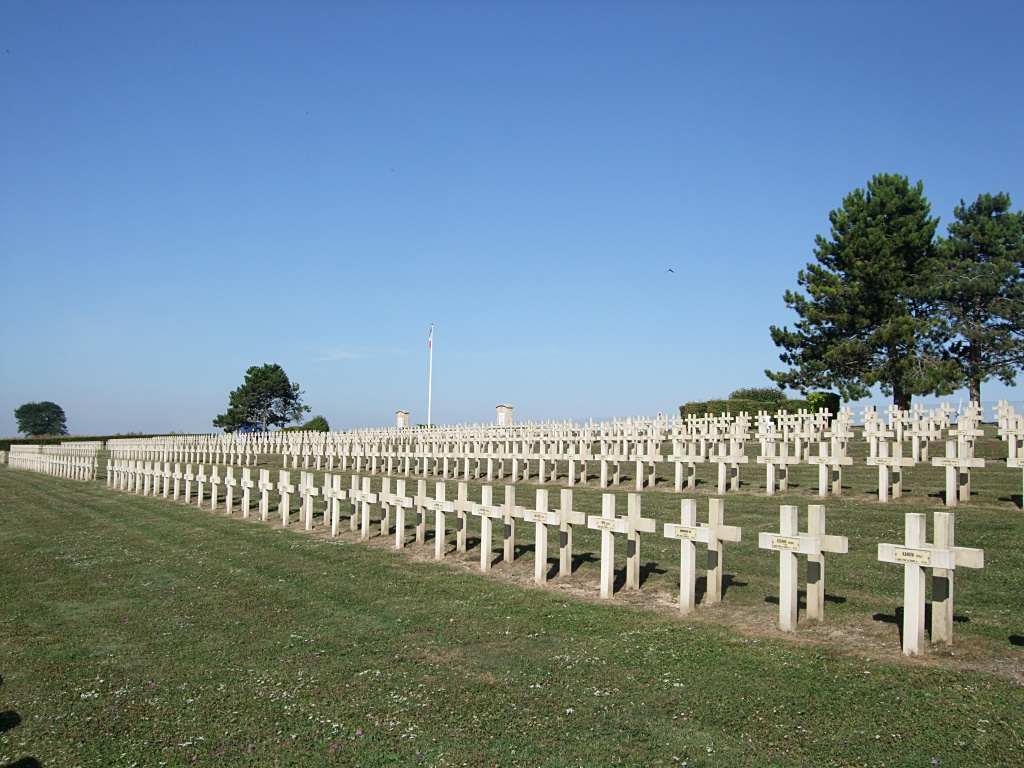George Summerscales
Date of birth: 1884
Date of death: 27.05.1918
Area: Outwood, Wakefield
Regiment: King’s Own Yorkshire Light Infantry
Family information: Husband of Mary Summerscales nee Stanyard
Rank: Private
Service number: 200917
War Service
On the 4th August 1914, when war was declared, George Summerscales was employed at Old Roundwood Colliery, but on 5th November 1914 he enlisted in the King’s Own Yorkshire Light Infantry at Ossett.
There is some confusion over the battalion he was serving in when he was killed. The Commonwealth War Graves Commission lists him as with the 2/4th KOYLI, whereas the “Soldiers who died in the Great War” show him with the 9th KOYLI. The Rethel French National Cemetery, where he is now buried, is 36 km north-east of Rheims which was under German occupation until November 1918. As he was buried at Rethel French National Cemetery, it is highly likely he was attached to 9th KOYLI, as that battalion was deployed in the area during May 1918. However, it is possible that he initially served with the 2/4th Battalion, before transferring to the 9th KOYLI.
The 9th (Service) Battalion, King’s Own Yorkshire Light Infantry, was formed in September 1914 and, along with the 10th Battalion KOYLI, was designated part of the 64th Infantry Brigade, 21st Division. The 21st Division joined the British Expeditionary Force in France on 11th September 1915 and two weeks later was in action at the Battle of Loos.
In 1916, the 21st Division was in action on 1st July, the opening day of the Battle of the Somme. During the attack around La Boiselle-Fricourt, the 9th KOYLI incurred 495 casualties. The 21st Division returned to the Somme battlefield, with the 9th KOYLI in action during operations at Gueudecourt, on the 16th and 25th September, when a further 389 casualties were incurred.
In April 1917 the 9th KOYLI, in Division, was involved in fighting on the Hindenburg Line and near Reutel. Later that year, in October, the battalion incurred 381 casualties during the Battle of Passchendaele.
On the 21st March 1918 the enemy launched its first major offensive of the year, towards Amiens. The 9th KOYLI, in Division, was forced to make a series of withdrawals before the German onslaught. Such was the casualty rate that all battalions in the 21st Division were incorporated into one composite battalion, until withdrawn on 28th March. At the beginning of April 1918 the Division moved to the Ypres Salient. Here reinforcements joined the 9th KOYLI, which now consisted almost entirely of new drafts. On the 9th April the German Army launched their second major offensive of the year, the Battle of the Lys had begun. However it was the 20th April before the 9th KOYLI went into the front line in the Wytschaete sector.
On 4th May the 21st Division moved south to a quiet sector on the Aisne for rest and recuperation. A week later the 9th KOYLI, in Brigade, marched 14 miles to the trenches at Provilly, where they took over from French troops.
At 01.00 hrs on 27th May 1918 the German Army launched its third offensive of the year against the Allied armies on the Aisne. By 03.00 hrs the post occupied by “D” Coy, 9th KOYLI was under attack and during the ensuing fighting the company was surrounded and eventually over-ran.
Later the Redoubt des Chasseurs, occupied by “C” Coy was attacked and surrounded, attempts to counter-attack and reach the company failed. After being subjected to a heavy bombardment for two hours, “A” Coy, at Bastion Jemmapes, was next to be attacked and eventually the enemy over-ran their position, with almost all the company becoming casualties. The fighting continued throughout the day, but during the night, orders were given to withdraw to Trigny. The German advance penetrated 15 km between Rheims and Soissons in the first twenty four hours. Further withdrawals became necessary until on the morning of 30th May, when the 9th KOYLI was replaced in the line by French troops.
Private George Summerscales was initially thought to have been taken prisoner, but was later listed as killed in action on 27th May 1918. He was initially buried at Brienne-sur-Aisne Military Cemetery, north-west of Rheims. However, after the war, his grave was brought into the French National Cemetery at Rethel, a town 36 km north-east of Rheims. The Cemetery contains the graves of 3,000 French soldiers, in addition to the 110 Commonwealth graves, 4 of whom are unidentified.
Family Life
There is only one serviceman with the name George Summerscales listed by the Commonwealth War Graves Commission, as a casualty of the Great War. This was the son of Lee and Emma Summerscales and husband of Mary Summerscales of Ossett. However, although his name is included on the war memorial at St Mary Magdalene Church, Outwood, I have been unable to establish his connection with Outwood, other than his step-mother was born in Outwood.
George Summerscales was born in 1884, the son of Lee Summerscales and his wife Emma, formerly Pye. The family home was at Top Row, in the village of Woolley, near Barnsley, but later moved to Calder Grove, Crigglestone. His father, Lee Summerscales, was a miner, working as an under manager and later as a contractor. George and his older brothers also found work in the local coal mines. In 1900 his mother, Emma Summerscales, died at the age of 45 years and two years later his father remarried. On 15th August 1908, George Summerscales married Mary Stanyard, by licence, at St Mary’s Church, Horbury Junction. At this time George was working as a colliery banksman and living at Junction Lane, Ossett. The following year their daughter Mabel was born and in 1911 the family was living at King Street in Ossett. In 1915 their daughter Iris was born.
 French National Cemetery Rethel
French National Cemetery Rethel

